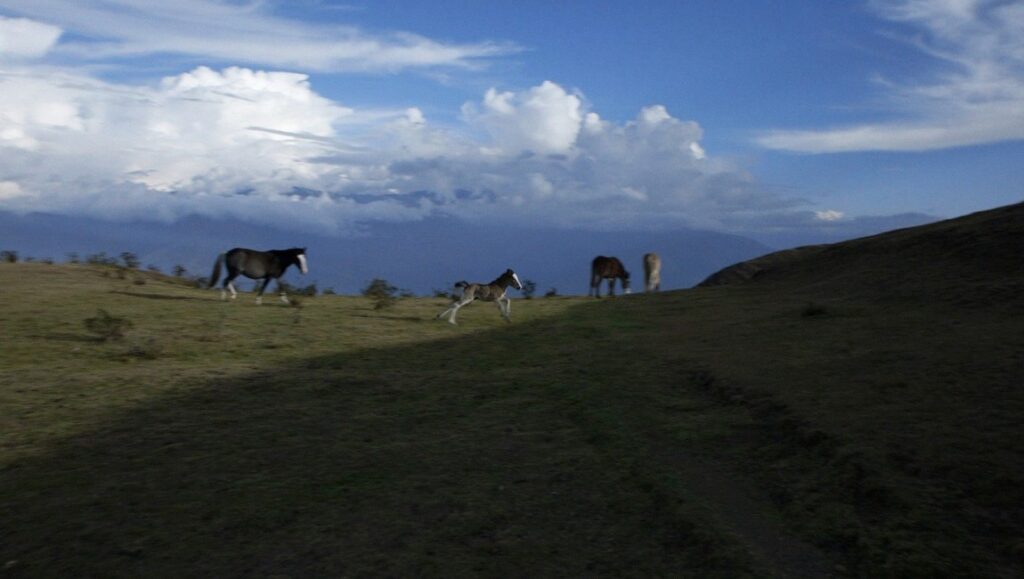Miguel Hilari’s Compania is a small, modest gem of a film, a poetic evocation of mystical and religious ceremonies juxtaposed with the natural beauty of the agrarian and the banality of the urban. Although hardly novel (Carlos Reygadas has been mining similar material for years), it’s still a fruitful dichotomy, and Hilari structures the film as a series of contrasts – rural and urban, of course, but also between organized religious services and more colorful, almost arcane ritualism. The Film Society of Lincoln Center description provides a bit of context to the film (which Hialri seems to have kept purposefully vague); it describes the film as a portrait of an ‘indigenous community who migrated to the city and have returned to their small mountain village in the Andes to honor the memory of their ancestors for a festival of the dead.’
There’s no proper narrative here to speak of, but instead a series of movements. Compania begins with a quiet journey under cover of night through snow-covered mountains, filmed inside a car with bodies in silhouette. The sun rises over snowcapped ranges, and the film pauses for a traditional musical performance of some kind, before segueing into various sequences of local life, including recollections of the filmmaker’s father’s death, a baptism, and people tending to their animals. Most striking is a beautiful sequence of villagers parading through a fog-shrouded landscape in colorful costume, a dreamy, abstract bit of jubilance that nonetheless carries a hint of melancholy. Despite some moments of stasis, Compania is mostly a film of constant motion, literally in the figures of people traversing various landscapes and traveling to and from the city. It’s a gorgeous film, with cinematography that reminds of Dion Beebe’s work for Michael Mann, finding rich variations of shades of black in the undulating night sky. Without being didactic, Hilari is still able to suggest a loss of sorts, as the film ends on a quiet moment of horses grazing in a field, fog creeping in, gradually enveloping them until they disappear into it. There’s a kind of cryptic, mysterious beauty to the unknown, a quiet revelry in the grandeur of the natural.
Published as part of Neighboring Scenes 2020.


Comments are closed.